7 Types of Ornament Tree With Names
Updated: 02/05/2024
56
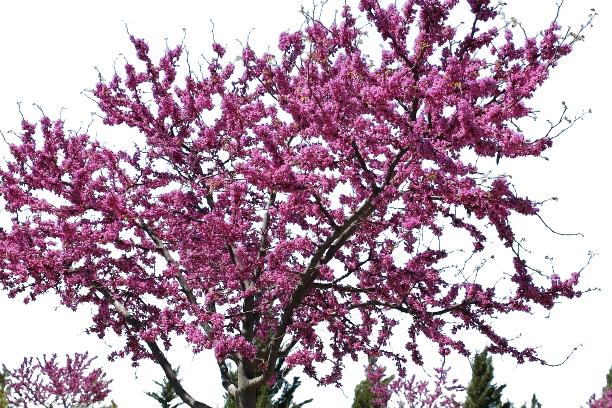
7 Types of Ornament Tree with Names
Ornament tree have different types but here we will explain few types with names
1. Eastern Redbud Ornament Tree
Eastern redbud is a ornament tree, is also called to as the harbinger of spring, the Eastern Redbud’s delicate flowers and buds are one of the season’s most stunning displays. However, this tree’s beauty doesn’t stop there with its flowery show. Unique and irregular branching patterns along with a trunk that often splits near the base, give it an attractive, wide-spreading, and sometimes flat-topped crown.
- In April, it bursts into a sea of beautiful pink flowers.
- It’s heart-shaped leaves that emerge a reddish colour, turn deep green in the summer before transforming approaches to a vibrant yellow in the fall.
- It adds a striking touch to any landscape. with its irregular branching and elegant shape.
- Large heart-shaped leaves, vibrant purple flowers in spring.
- Enjoy 4-8 hours of sunlight, from full sun to partial shade.
BEST VARIETIES OF EASTERN REDBUD
Most redbuds ornament tree come in lavender-pink blooms, but there are also types with white, deep magenta, or light pink flowers. The leaves can range from deep purple to chartreuse.
- ‘Forest Pansy’ is one most popular choice with its deep purple leaves and rose-colored flowers. In cold climates, the foliage stays burgundy all summer, but turns green in hot Southeastern climates.
- ‘Ruby Falls’ is great for small spaces with its weeping habit and red-purple flowers.
- ‘Texas White’ has glossy green leaves and abundant white blooms.
- ‘Alba’ has white flowers and light green leaves.
- ‘The Rising Sun’ has stunning color changes from apricot to vivid gold to bright green.
- ‘Ace of Hearts’ is a small variety that doesn’t need pruning and tops out at 12 feet.
- ‘Silver Cloud’ has variegated leaves with creamy white and pink splashes.
- ‘Hearts of Gold’ features bright golden-yellow leaves that slowly change to chartreuse during the summer.
- ‘Merlot’ a hybrid of Forest Pansy and Texas White, has shiny dark purple leaves and good heat tolerance.
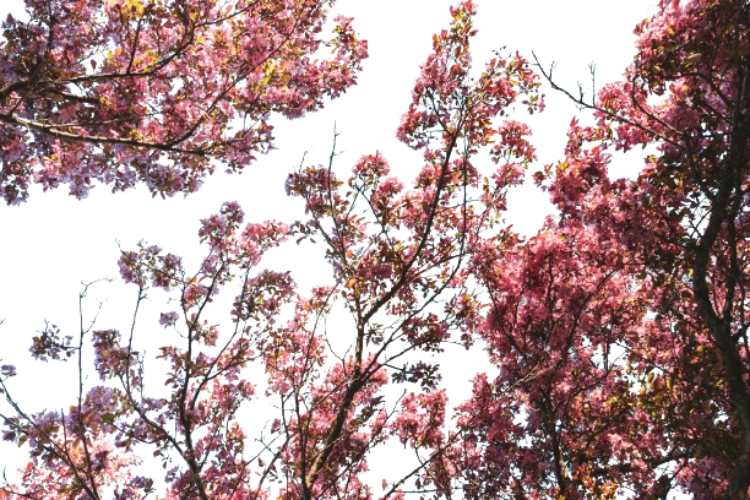
2. Royal Poinciana Ornament Tree
The Royal Poinciana, also called Gulmohar tree, flame tree, or fire tree, is renowned for its stunning beauty. It can adapt to many climates, except extremely dry or frosty ones. The flowers bloom from April to May, and the leaves begin turning yellow and falling off around November.
With its shallow roots, the tree is susceptible to storm damage. Growing up to five feet per year, it matures quickly. The flowers come in a range of colors from light orange to deep scarlet and everything in between.
This impressive, rapidly growing tree sheds its leaves and produces stunning flowers, making it a standout in tropical landscapes. Before planting it in your yard, make sure there’s enough room for its many branches.
For optimal growth, the royal poinciana ornament tree needs plenty of sunlight, moderate water, and well-drained soil, according to Stephen McFarlane, regional landscape manager for Sandals Resorts International.
Taking care of this plant is easy as it only needs a moderate amount of sunlight. It grows up to 5 ft. per year, making it mature and flowers rapidly When it’s still growing, make sure to trim the plant carefully and regularly.
This plant is highly resistant to most pests, so you won’t have to worry about them, but its wood can be damaged by animals and insects.
The Royal Poinciana ornamental tree is valued for several reasons:
1. Ornamental value: It is widely cultivated for its beauty and is often found along roads and sidewalks. The tree has a lovely aroma and provides excellent shade.
2. Cultural value: In Kerala, the Royal Poinciana is considered sacred. It also serves as the city flower of Selangor in Malaysia.
The Royal Poinciana ornament tree has various uses:
- Commercial uses: Its wood is used as fuel due to its high calorific value of 4600 kcal/kg. The flowers are used in producing bee forage, while the tree’s thick water-soluble gum serves as a binding agent in tablet manufacturing and textile industries.
- The hard elongated seeds are used to make beads, as well as Pangam Oil which finds use in the tanning industry.
- The Royal Poinciana offers both aesthetic beauty and practical utility.

3. Golden Trumpet Ornament Tree
Ah, the Golden Trumpet ornamental tree, a dazzling sight to behold in any garden or landscape. Its vibrant yellow flowers can brighten up even the dullest of days, and its delicate foliage add an elegant touch to any outdoor space. But beyond its beauty, this tree also attracts various pollinators such as butterflies and bees, making it a haven for wildlife enthusiasts.
One fascinating aspect of the Golden Trumpet tree is its adaptability to different climates; it thrives in both tropical and subtropical regions, adding a splash of color to diverse environments.
Moreover, its relatively low maintenance nature makes it an ideal choice for beginner gardeners or those with limited time for upkeep. This ornamental tree serves as a symbol of resilience and joy, representing nature’s ability to thrive even in the harshest conditions.
If you’re aiming to create a statement piece in your garden without compromising on environmental sustainability, consider planting a Golden Trumpet ornamental tree. Its striking appearance and ecological benefits make it an excellent addition to any outdoor space.
Whether you’re looking for a pop of color or seeking to support local pollinators, this magnificent tree has much to offer for both you and the natural world around you.
As it matures, this small to mid-sized tree can reach heights of up to 40 feet. During spring, when its leaves fall, it showcases a stunning display of bright yellow flowers.
According to McFarlane, the tree may also produce flowers at various times throughout the year, so keep an eye out for them. The golden trumpet thrives in full sun and is highly resistant to drought once it has taken root.

4. Hong Kong Orchid Ornament Tree
The Hong Kong Orchid Tree, also known as Bauhinia blakeana, is a stunning tree native to Hong Kong. Its large, vibrant purple blooms stand out against the urban landscape, creating a striking contrast that beckons passersby to admire its beauty. The tree’s unique heart-shaped leaves add to its allure, making it a favorite for both local residents and visitors alike.
This beautiful plant is a small tree that can reach heights and widths of up to 30 feet. It produces gorgeous rose-pink flowers that look similar to orchids, even though they are not related. Unlike other orchid trees, this type doesn’t produce seed pods, making it sterile.
According to McFarlane, the Hong Kong orchid tree thrives in well-drained soil and can be grown in full sun or light shade.
One interesting fact about the Hong Kong Orchid Tree is its significance as the emblem of the city. It was chosen as the floral emblem of Hong Kong due to its resilience and ability to thrive in challenging urban conditions, much like the people of Hong Kong themselves.
Additionally, this tree holds cultural significance in Chinese traditions, representing beauty and elegance. Beyond its aesthetic appeal and symbolic value, the Hong Kong Orchid Tree also plays a important role in urban ecology.
With its ability to attract pollinators such as butterflies and bees, it contributes to biodiversity in urban environments. Moreover, its lush foliage provides shade and helps mitigate air pollution a much needed benefit in densely populated cities like Hong Kong.
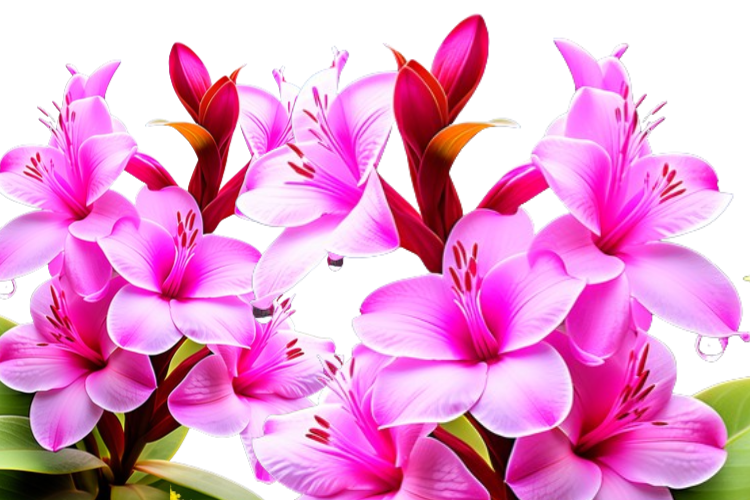
5. Serviceberry Ornament Tree
The Serviceberry ornamental tree, also known as Amelanchier, is a stunning addition to any landscape. With its delicate white flowers in spring, followed by berries that attract birds and wildlife, this tree offers both beauty and ecological value.
Not only does it provide visual interest throughout the seasons, but it also serves as a food source for various creatures, enhancing the biodiversity of the area.
Serviceberry trees, with their beautiful white blooms in spring and vibrant foliage in the fall, are a great choice for small yards due to their compact size and year-round appeal. To ensure healthy growth and a striking appearance, it’s important to regularly prune these versatile ornamental trees and provide them with sufficient water and sunlight.
The Serviceberry tree is its rich cultural history. Indigenous peoples have long utilized its berries for culinary and medicinal purposes, adding layers of significance to an already charming plant. The deep connection between this tree and human societies throughout history lends a sense of timelessness and tradition to any environment graced by its presence.
Furthermore, the versatility of Serviceberry trees makes them an appealing choice for any gardener or landscaper. Whether planted as solitary specimens or used in groupings or hedgerows, these trees lend themselves to a variety of design schemes while requiring minimal maintenance.
Their adaptability to diverse soil types and tolerance for different light conditions make them easily integrated into almost any outdoor space. The potential for creativity in incorporating these beautiful trees into landscaping projects is seemingly limitless.
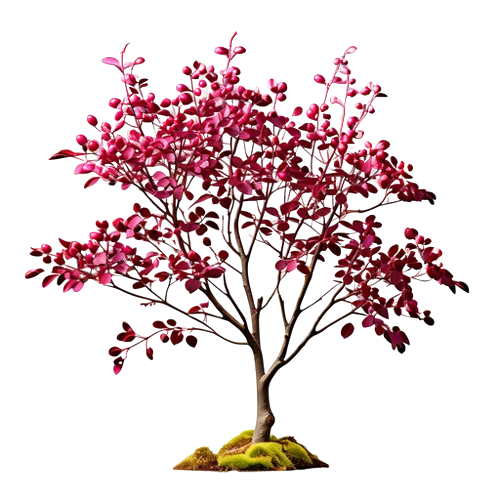
6. Milky Way Ornamental Tree
The Milky Way ornamental tree is truly a sight to behold. With its delicate, star-shaped blooms and graceful, weeping branches, it adds an ethereal beauty to any garden or landscape. Unlike other ornamental trees, the Milky Way variety stands out with its unique appearance and stunning white flowers that resemble a celestial galaxy.
One of the most fascinating aspects of the Milky Way tree is its ability to attract butterflies and bees, adding a dynamic element to any outdoor space. Its low maintenance nature makes it ideal for both experienced gardeners and beginners alike.
Best planted in well-drained soil and positioned in full sun, this tree thrives in various climates and brings a touch of magic wherever it grows. Whether you’re looking for a focal point in your garden or seeking to create a dreamy atmosphere, the Milky Way ornamental tree is sure to enchant all who encounter it.
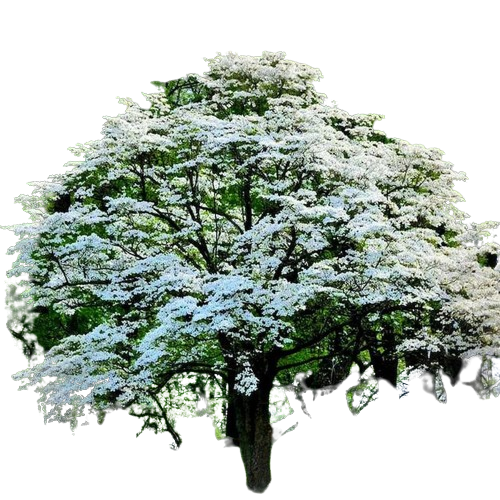
7. Callery Pear Ornament Tree
Ah, the Callery pear tree, a true gem in the world of ornamental trees. Its delicate white flowers in spring are a sight to behold, transforming any landscape into a breathtaking masterpiece. But beyond its aesthetic appeal, this tree has a secret it’s incredibly hardy and adaptable.
While many ornamental trees are finicky and require meticulous care, the Callery pear thrives in a variety of soil types and climates, making it an ideal choice for both novice and experienced gardeners.
One fascinating aspect of the Callery pear tree is its history. Originally hailing from China and Vietnam, it traveled across continents to become one of the most beloved ornamental trees in North America. This journey speaks volumes about its resilience and ability to flourish in new environments.
Furthermore, its small fruits are cherished by wildlife, adding an ecological dimension to its charm. So next time you encounter a majestic Callery pear tree gracing a neighbourhood street or park, take a moment to appreciate not only its beauty but also its remarkable journey and significance in our natural world.
In conclusion, the Callery pear tree is more than just an ornamental addition to gardens – it’s a testament to nature’s ingenuity and adaptability. Its enduring allure serves as a reminder that even in challenging conditions, there is potential for growth and beauty.

Please Write Your Comments